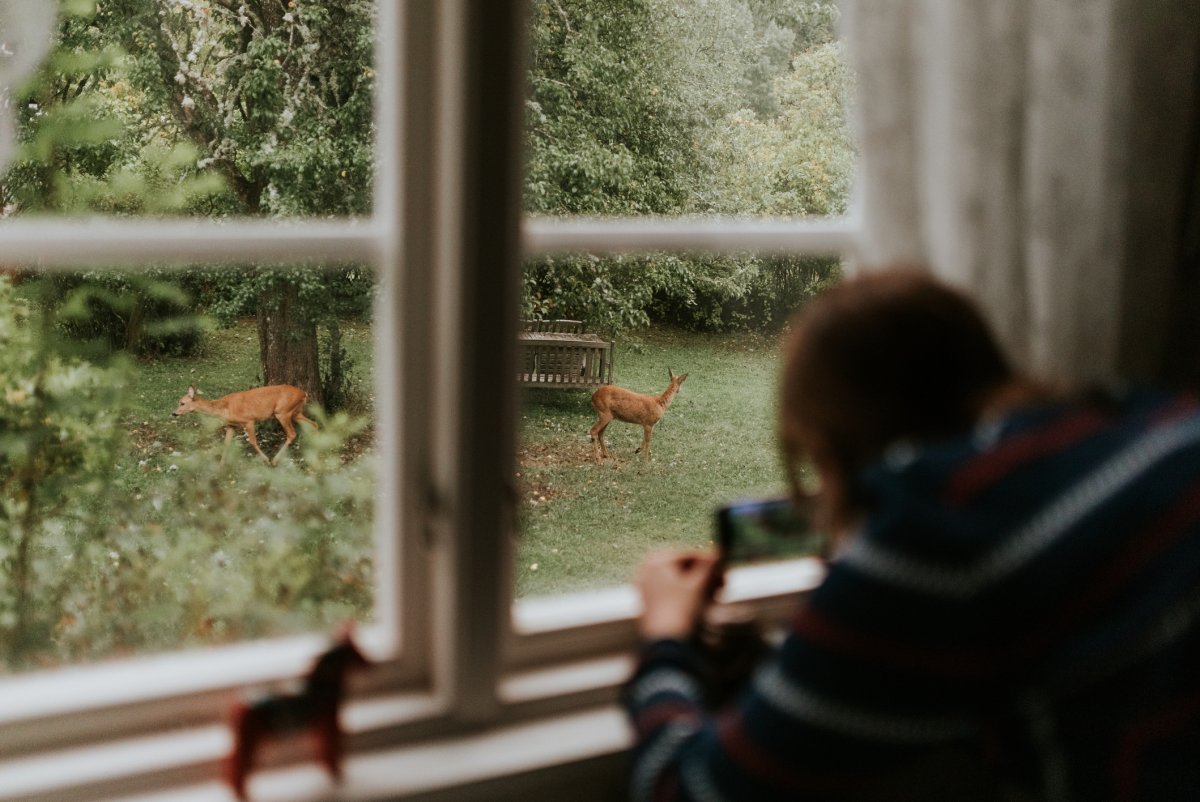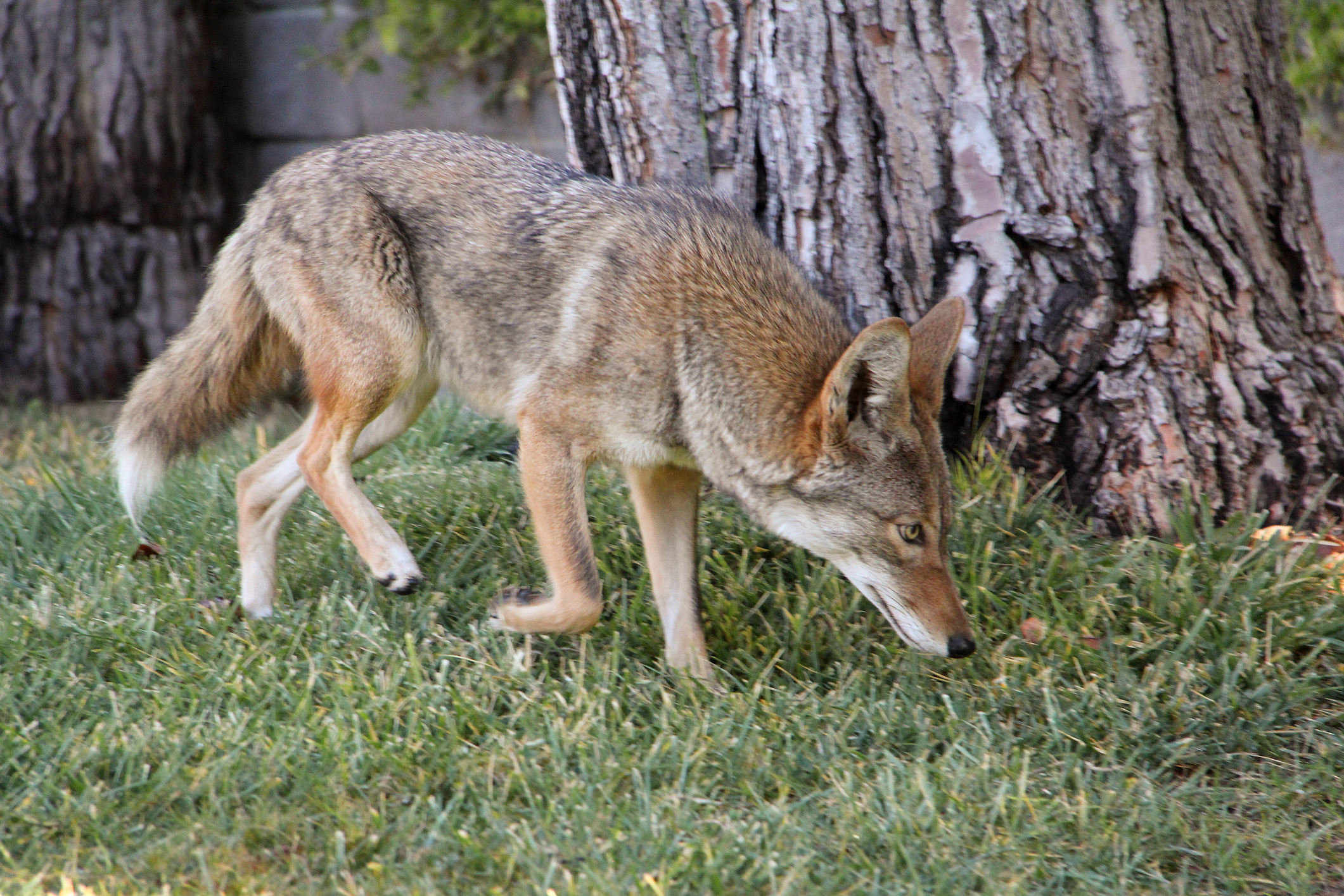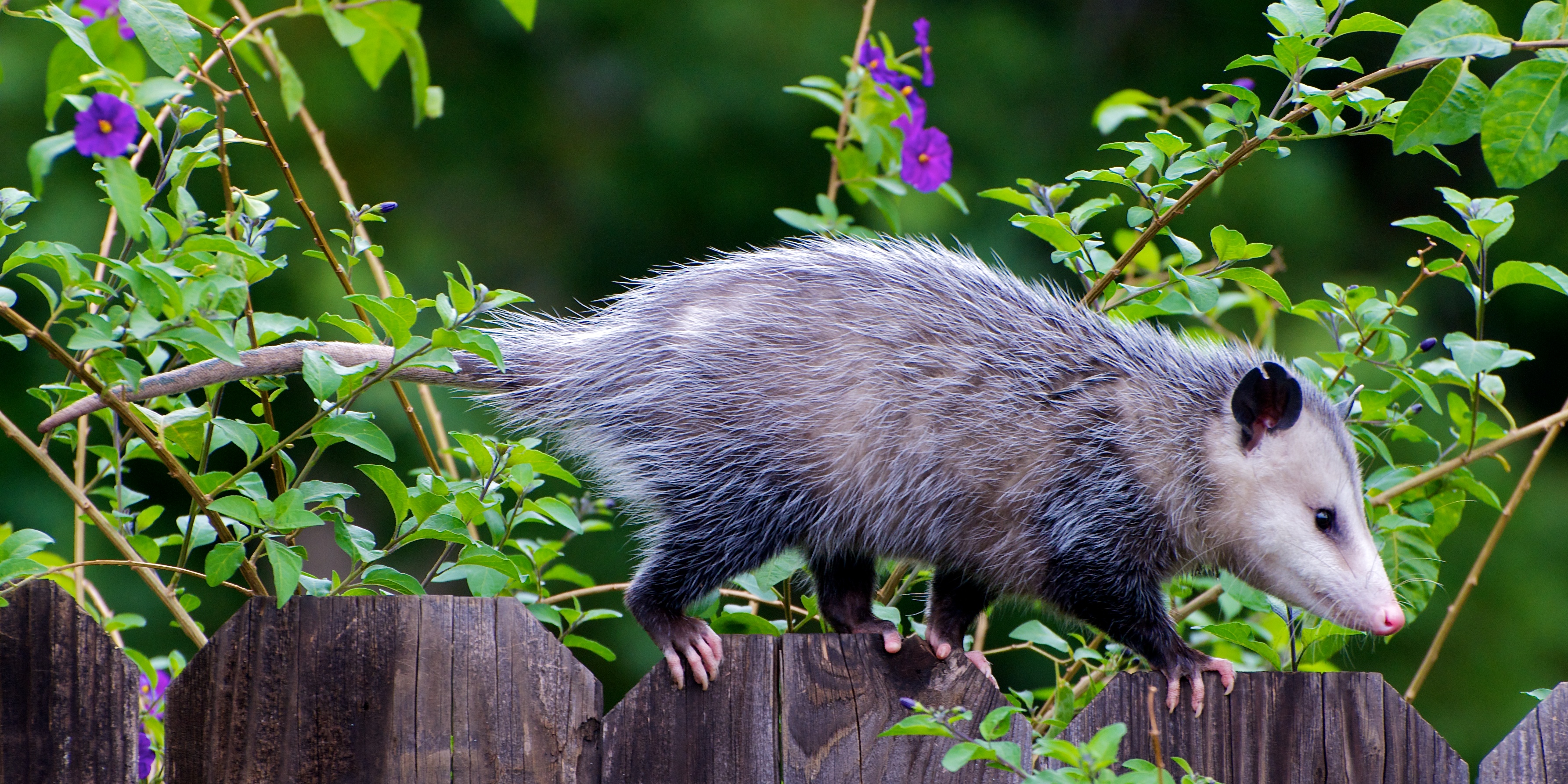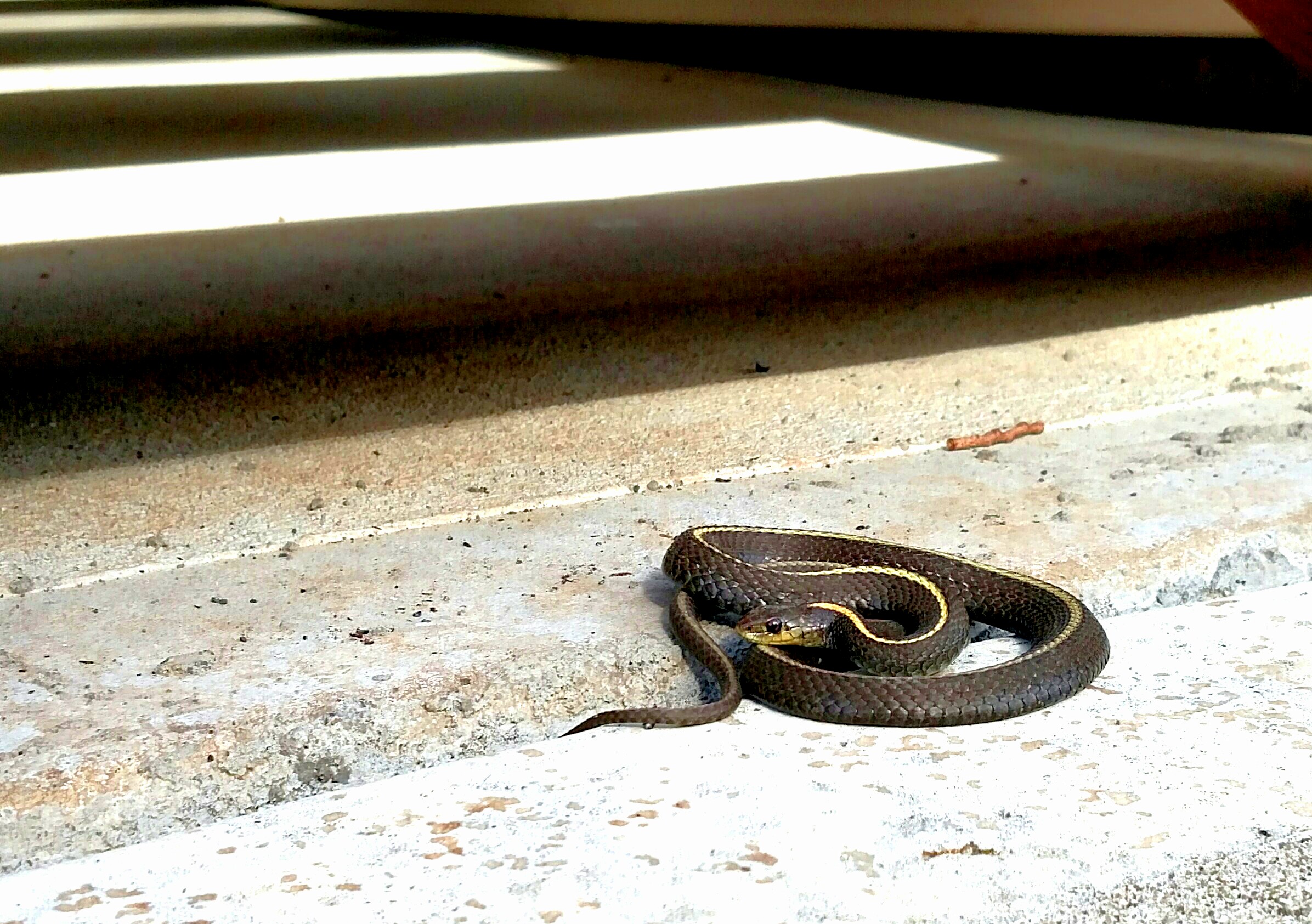

We may earn revenue from the products available on this page and participate in affiliate programs. Learn More ›
I’ll never forget the time I drove up to my house in Florida soon after moving from up North and saw a big black snake sprawled out on my driveway. I let out a scream and froze up. I decided to wait it out inside my car, and eventually the creature slithered away into a nearby bush so I could jet into my garage and enter my home safely. In addition to snakes, we’ve seen iguanas, opossums, raccoons, and even a coyote walking around our yard over the years.
One of the benefits of having a backyard is to enjoy nature. We all expect to see rabbits, birds, squirrels, and butterflies. It’s those times when a scarier animal appears that might shock us. Black bears, for example, are showing up more often across the country. In 2022, people in 18 states reported an increase (more than 46,000 incidents) of seeing a bear in their yard, according to data compiled by the International Association for Bear Research and Management.
Human encounters with wildlife are becoming more common due to shrinking natural habitats and expanding human neighborhoods, says Rachel Smith, manager of Cedar Rapids Animal Care and Control in Cedar Rapids, Iowa. Here we’ll guide you through what to do if you come face to face with wild animals on your property, including how to react, how to deter them, and when to call a pro for help.

What to Do If You Spot a Wild Animal on Your Property
When it comes to spotting wildlife in your backyard, it’s important to remember not to engage with the animal, advises Smith. “Generally speaking, wildlife want nothing to do with humans and most often find humans as a threat,” she says.
Wildlife can potentially become aggressive when protecting their nearby young. “The best course of action is to respect their boundaries; it usually doesn’t take long for the wild animal to move on,” says Smith. Maintain a reasonable distance and never feed wildlife. If a wild animal appears ataxic (uncontrolled movement or akin to a drunken gait), that could be an indication that they have a disease like rabies and might pose a risk to humans and pets, says Smith.
To determine whether an animal is just passing through or frequenting your yard, check to see if you have any food items left outside that could be appealing to the animal, says Smith. “For example, rabbits, squirrels, and deer often frequent backyard gardens as they are an easy food source. Other examples of food sources include bird feeders, bags of pet food left outside, or even exposed trash.” If food sources remain available to wildlife, they will develop a tendency to return.
Protecting Pets From Wild Animals
Do what you can to prevent your pets from engaging with wild animals. Smith recommends always supervising dogs and keeping them on a leash while outside, regardless of the season. The best way to protect cats is to simply keep them indoors. “Certain wild animals such as raccoons, skunks, foxes, coyotes, and bats are what we call ‘reservoir’ species or ‘vectors,’ meaning that they can carry rabies, which is fatal unless pets have a current rabies vaccine,” explains Smith.

Most Common Wildlife to Expect in Your Backyard
Some of the most common types of wildlife to see in your backyard—that also might cause a shiver down your spine—include coyotes, foxes, opossums, skunks, and snakes, says Smith. While specific animal sightings depend on where you live due to the local climate and habitat, wild animals generally tend to be more active in the spring during mating season and when food sources are more readily available.
Coyotes
When we saw a coyote walking through our backyard, at first we thought it was a dog, though something about it looked different. Coyotes are part of the same genus as domestic dogs and are about the same size as a medium dog—about 36 inches tall and 30 to 35 pounds in weight. They’re lean-looking and have a bushy tail with a downward sloping angle. Their fur can range in color from gray to reddish to black. Coyotes tend to be most active at dusk and dawn, but it’s also normal to see them during the daytime. However, that doesn’t necessarily mean they are rabid.
Most of the time coyotes won’t bother anyone, but their predatory habits raise concerns. There are cases in which they have attacked pets or people, although that usually happens if someone has been feeding them or ventures too close to their den and pups. The biggest risk of coyotes is their ability to transmit disease to pets. If you spot a coyote, keep an eye on small children and don’t leave pets alone outside, especially at night. You can scare off a coyote by yelling and waving your arms around, banging pots and pans, using an air horn, or turning on a sprinkler.

Foxes
Related to dogs, coyotes, and wolves, red foxes and gray foxes also look like dogs yet have a long bushy tail, pointed snout, and large upright ears. It is common to spot them at dusk and dawn. They are usually shy and will not bother people. It’s important to stay away from foxes since they can carry rabies and other diseases. Foxes might build a den under a porch or deck. Prevent this by using wire fencing and mesh to keep them from sneaking into these areas on your property. Never feed or approach foxes; just give them some space and they will move on.
Opossums
As the only native marsupial found in the United States, the Virginia opossum might pay a visit but rarely cause any harm. Actually, they can be helpful by eating rodents, lizards, and insects. Some people are taken aback by them since they look like giant rats.
While opossums are harmless to people and pets, these nocturnal animals might get into a birdfeeder or attack backyard chickens. You might also find them lurking around gardens, compost piles, or uncovered garbage cans. Deter opossums by covering or removing food sources; installing a wire fence around your garden; trying repellents like cayenne powder, garlic oil, or vinegar; and reducing potential shelter spots by trimming tall grass, pruning overgrown shrubs and trees, and removing log piles and brush. As a last resort, you might need to call a pro to set a trap and relocate the animal.

Skunks
Finding a skunk in your yard is sure to make you squirm. Just the thought of getting sprayed with their foul odor is enough to scare anyone. They are also an annoyance, since they dig for grubs in the lawn. Although skunks typically are docile animals that avoid people, they can carry rabies and other diseases. It’s critical for you and your pets to avoid them at all costs. Keep garbage lids secure and seal off access to the area under your deck, patio, shed, and other outdoor structures to prevent them from burrowing there. Also, try installing a fence or motion sensor lights or putting out skunk repellents like cayenne or jalapeño.
Snakes
A wide variety of snakes—some venomous and some not—can appear on your property from time to time. While many are harmless and help eliminate pests, snakes in general are quite frightening to many homeowners, especially since snakes top the list of Americans’ phobias, according to YouGov.
Snakes often hide under rocks, behind bushes, and in piles of leaves or wood, but if you discover one, give it space and let it move along on its own. They are often attracted to water and like tall grass and shady areas where they can find food sources like insects and rodents. To keep snakes at bay, fill in burrows, cut your grass short, eliminate standing water, or put out some snake repellent. Consult a professional if you think any venomous snakes are visiting your yard.

When to Call a Pro
If you’ve tried a few of the tactics mentioned above but continue to have wild animals visiting your yard, it might be time to contact an animal care and control expert. “Involve experts if wildlife show signs of illness (staggering, excessive drooling), are trapped indoors, or are a protected species,” says Dr. Sabrina Kong, DVM, staff veterinarian at WeLoveDoodles in San Mateo, California. “Never handle bats (rabies risks) or venomous snakes. For persistent issues (like a raccoon family in the attic), licensed rehabilitators can ethically relocate animals post-weaning.” It’s also important to report any injured wild animals to authorities as soon as possible.
